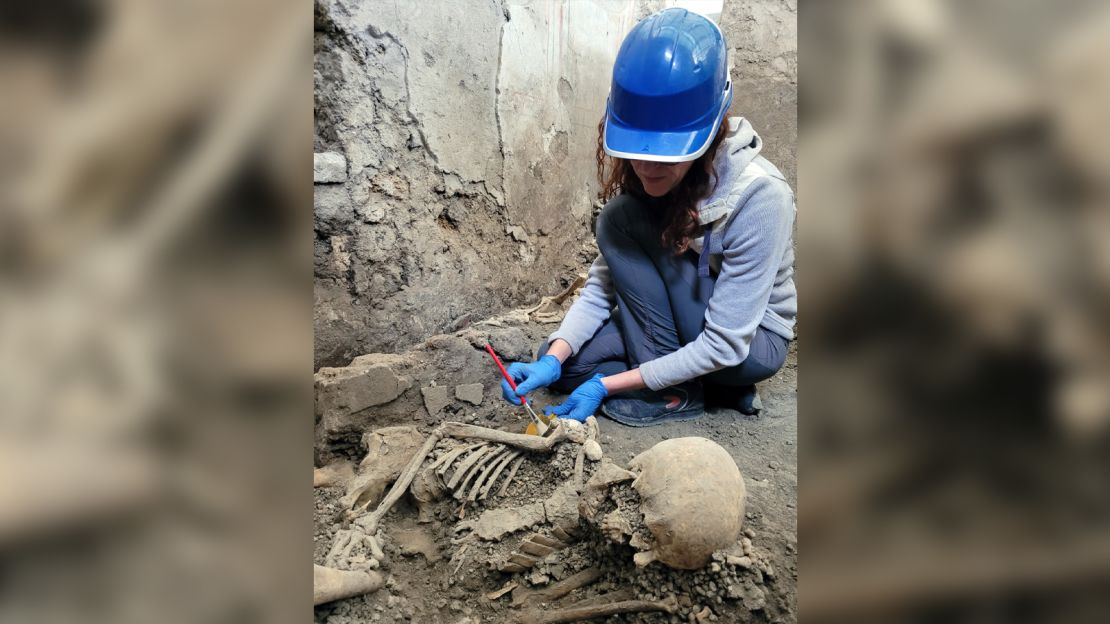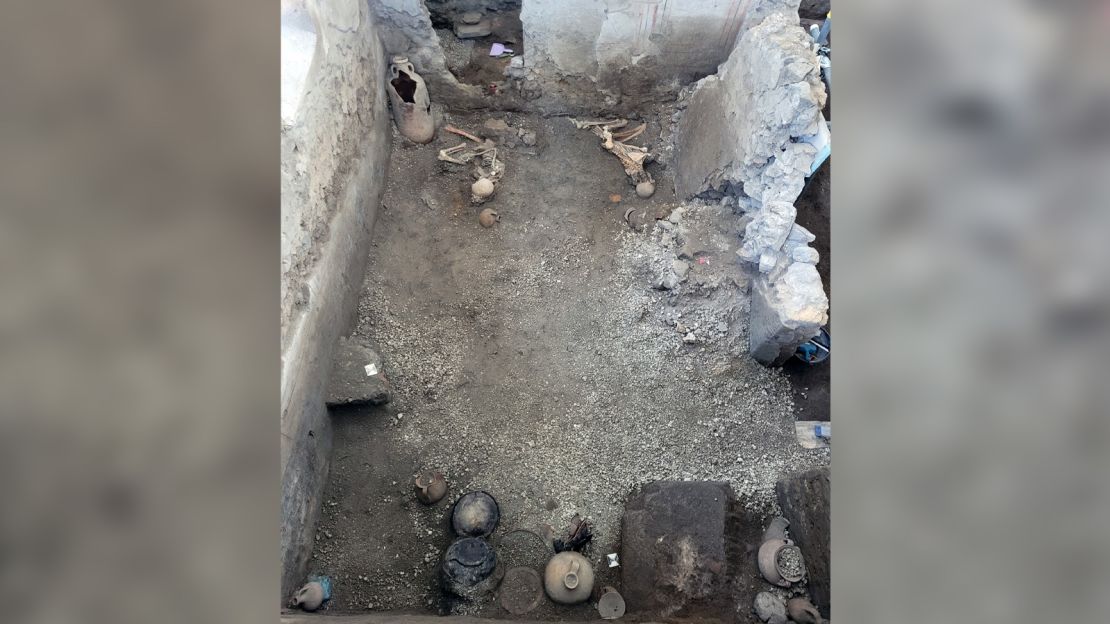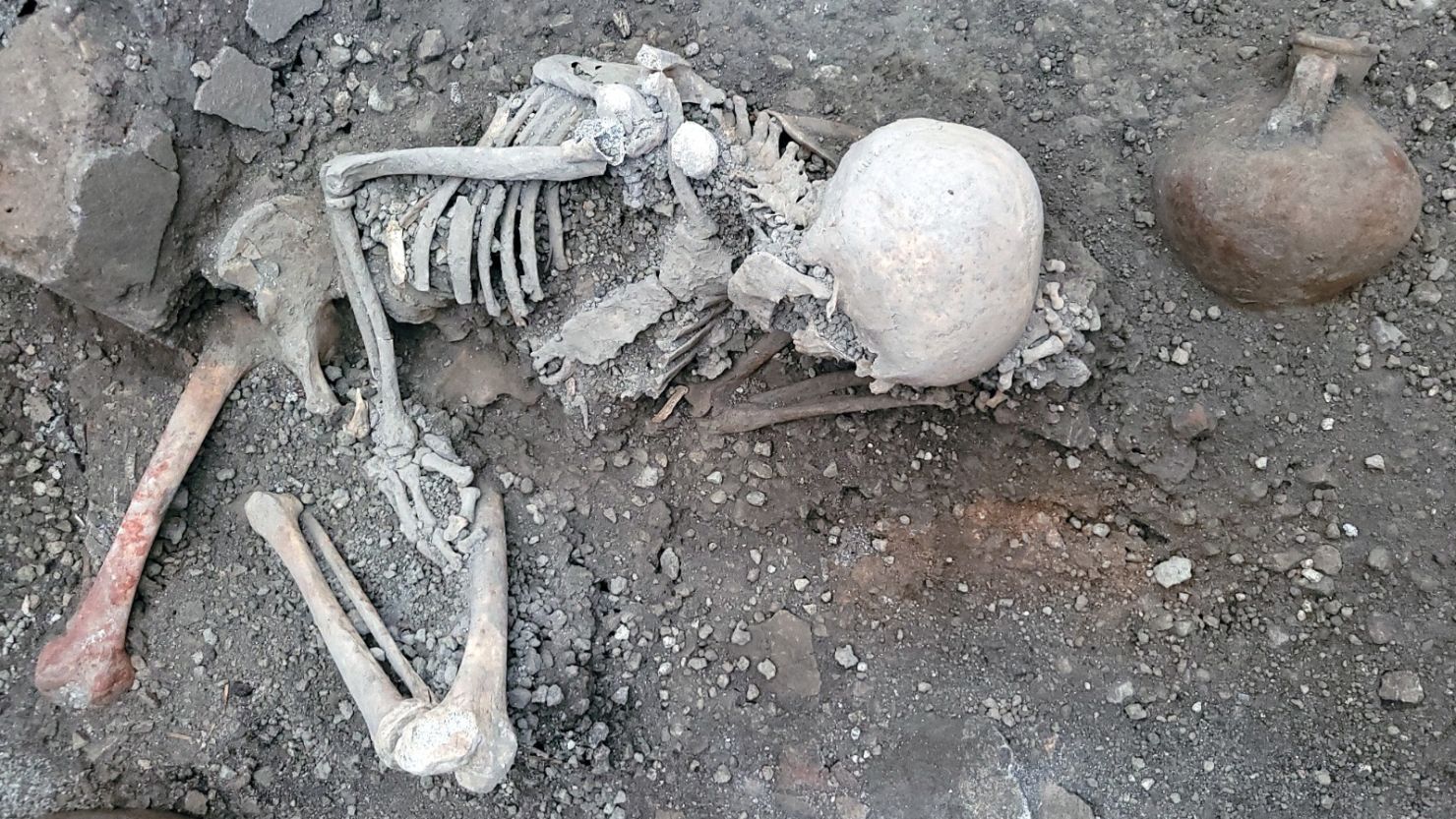Archaeologists working at Pompeii have found two new victims that they say were killed by an earthquake that accompanied the volcanic eruption of 79 AD.
The Italian city may be most closely associated with the destruction wrought by the eruption of Vesuvius, but these two men were in fact killed by walls knocked down by a simultaneous earthquake, according to the official Pompeii archaeological site.
“Part of the south wall of the room collapsed, crushing one of the men whose raised arm offers a tragic image of his vain attempt to protect himself from the falling masonry,” reads a press release on Tuesday.
“The conditions of the west wall demonstrate the tremendous force of the earthquakes that took place at the same time as the eruption: the entire upper section was detached and fell into the room, crushing and burying the other individual,” it continues.

The pair, who were at least 55 years old, were found during excavations of the Insula of the House of the Chaste Lovers during work to improve the safety of the building.
They were found lying in a utility room where they had sought refuge, and were killed by multiple traumas as parts of the building collapse.
Archaeologists found organic matter, which they believe to be a bundle of fabric, as well as glass paste, which is thought to be the beads of a necklace and six coins. The team also found an amphora leaning against a wall and a number of vessels, bowls and jugs.
In an adjoining room, archaeologists found a stone kitchen counter covered in powdered lime, which they say suggests that building work was being undertaken nearby at the time of the eruption.
The discovery “shows how much there is still to discover about the terrible eruption of AD 79 and confirms the necessity of continuing scientific investigation and excavations,” said Italy’s Minister of Culture Gennaro Sangiuliano in the release.

“Pompeii is an immense archaeological laboratory that has regained vigour in recent years, astonishing the world with the continuous discoveries brought to light and demonstrating Italian excellence in this sector,” he added.
Details of the excavation were published in the E-Journal of Pompeii.
The Roman city of Pompeii was buried under meters of pumice and ash in the calamitous eruption of Mount Vesuvius in 79 AD.
Archaeologists have uncovered only around two thirds of the 66-hectare (163 acres) site since excavations began 250 years ago, Reuters reports.
